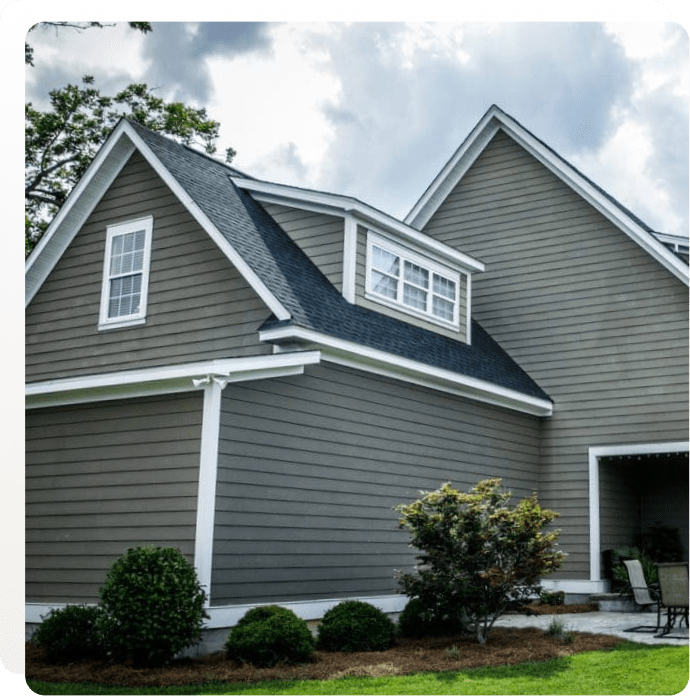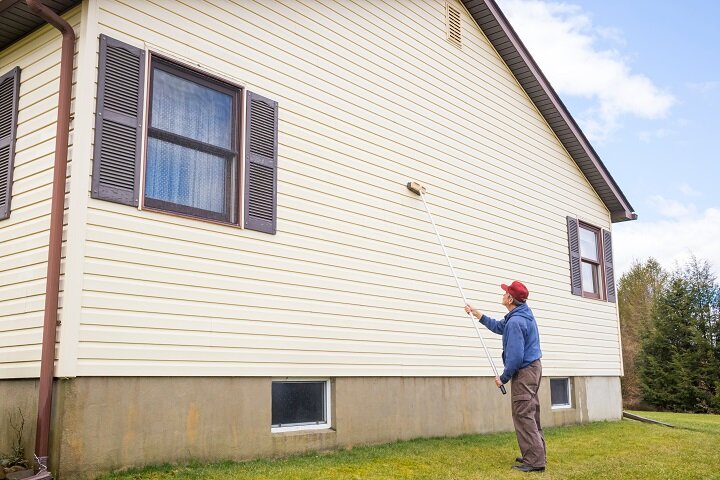Morris Siding Contractor Committed to Excellence in Every Project
Morris Siding Contractor Committed to Excellence in Every Project
Blog Article
The Crucial Overview to the Numerous Sorts Of House Siding and Their One-of-a-kind Advantages
In the world of home renovation, picking the right house siding is a crucial decision that impacts both aesthetic allure and practical efficiency. With so several options to think about, which home siding material really stands out for your particular project?
Timber House Siding
Timber exterior siding, a prominent choice for household outsides, uses a timeless visual that integrates natural elegance with architectural stability. This siding product is offered in different designs, consisting of clapboard, tiles, and board-and-batten, enabling house owners to customize their appearance to match their style preferences. Timber exterior siding is commonly crafted from sturdy types such as cedar, redwood, or yearn, which are understood for their resilience and capacity to endure ecological stressors.
Among the main advantages of wood siding is its excellent insulation homes, which can add to energy performance and lower heating prices. Additionally, timber exterior siding is eco-friendly, making it an eco-friendly alternative when sourced sustainably. Regular upkeep, consisting of painting or staining, can prolong its life-span and enhance its appearance, permitting home owners to preserve the all-natural charm of the wood.
Nonetheless, potential disadvantages consist of susceptibility to insects, rot, and climate damage, necessitating appropriate therapy and maintenance - morris siding contractor. Despite these worries, when properly cared for, wood home siding can give a stunning and sturdy service that improves the personality of a home while offering a cozy, welcoming atmosphere

Vinyl House Siding
Vinyl exterior siding has arised as a leading option for homeowners looking for a low-maintenance outside alternative that integrates resilience and price. This flexible product is crafted from polyvinyl chloride (PVC), making it resistant to numerous weather, including dampness and UV rays. Consequently, plastic exterior siding does not warp, rot, or discolor, ensuring resilient aesthetic charm.
Among the primary advantages of plastic exterior siding is its considerable variety of styles and colors, permitting property owners to attain the desired seek their residential or commercial property without the demand for frequent repainting. In addition, vinyl home siding is easy to set up, which can dramatically decrease labor expenses throughout construction or restoration tasks.
Vinyl exterior siding likewise adds to power performance. Many options function insulation support, which boosts thermal performance, helping to maintain comfy interior temperatures and potentially reducing power costs. In addition, its smooth surface area promotes easy cleaning, requiring only routine washing with a yard hose to remove dirt and debris.
Fiber Concrete Siding
Fiber cement exterior siding has obtained traction among home owners and contractors alike because of its exceptional mix of resilience and aesthetic convenience. Made up of a blend of cellulose, concrete, and sand fibers, this exterior siding option is crafted to stand up to severe weather condition problems, including high winds, hefty rain, and temperature variations, making it a durable option for household exteriors.

Among the key benefits of fiber concrete exterior siding is its resistance to parasites, such as termites, and its non-combustible nature, offering improved fire safety and security. morris siding contractor. Furthermore, it is readily available in a vast array of appearances, styles, and shades, enabling home owners to achieve their preferred visual without giving up performance
One more benefit is its reduced Continued upkeep requirements; fiber cement home siding generally needs paint or discoloration every 5-10 years, which is much less constant than other materials. Its long life contributes to a lower general price of possession, as it decreases the demand for frequent repair work or substitutes.
Inevitably, fiber concrete house siding represents an outstanding investment for those looking for a durable, eye-catching, and functional exterior option, integrating both type and feature to boost the home's curb appeal.
Metal House Siding
The allure of steel house siding exists in its durable toughness and modern aesthetic allure, making it a favored selection for basics contemporary design. Readily available in materials such as light weight aluminum and steel, metal siding supplies a variety of surfaces and colors, allowing home owners to achieve a customized appearance that complements their design vision.

Energy efficiency is one more substantial advantage, as numerous steel house siding items are designed with insulation choices that aid manage interior temperature levels. This can lead to decreased energy costs in time. In addition, metal siding is usually recyclable, making it an eco pleasant selection for sustainability-minded home owners.
The installation process for metal home siding can be relatively simple, causing a quicker turn-around time for construction projects. Overall, steel exterior siding integrates performance and design, making it a functional option for those seeking a aesthetically appealing and long-lasting exterior coating.
Brick and Rock House Siding
Block and rock exterior siding sticks out as an ageless option that enhances the visual beauty of any home. Known for their longevity and reduced maintenance, these materials provide an outstanding roi while elevating the residential property's aesthetic charm. Available in different colors, textures, and patterns, brick and rock can be tailored to match varied description building designs, from typical to modern-day.
Among the primary advantages of brick and rock home siding is their power effectiveness. Both materials possess natural shielding homes that help manage indoor temperatures, potentially decreasing cooling and heating costs. In addition, they use remarkable fire resistance compared to other siding choices, adding to boosted safety and security.
One more benefit is their long life. Block and stone can last for decades, often requiring marginal maintenance past periodic cleansing. Unlike timber home siding, they are unsusceptible pests and rot, guaranteeing a durable outside that withstands the aspects.
Final Thought
In summary, the option of exterior siding considerably impacts a home's visual appeal, energy performance, and upkeep requirements. Each kind of siding-- whether wood, plastic, fiber metal, brick, or concrete and stone-- supplies distinct advantages customized to various property owner choices and environmental problems.
One of the key benefits of wood exterior siding is its exceptional insulation properties, which can contribute to energy effectiveness and lower heating costs. Furthermore, wood house siding is naturally degradable, making it an eco pleasant option when sourced sustainably.One of the main advantages of metal exterior siding is its resistance to different ecological aspects.Energy efficiency is another considerable benefit, as many metal exterior siding products are made with insulation alternatives that aid manage indoor temperatures. Each type of house siding-- whether wood, vinyl, fiber cement, metal, or brick and stone-- supplies special benefits customized to numerous house owner preferences and environmental problems.
Report this page